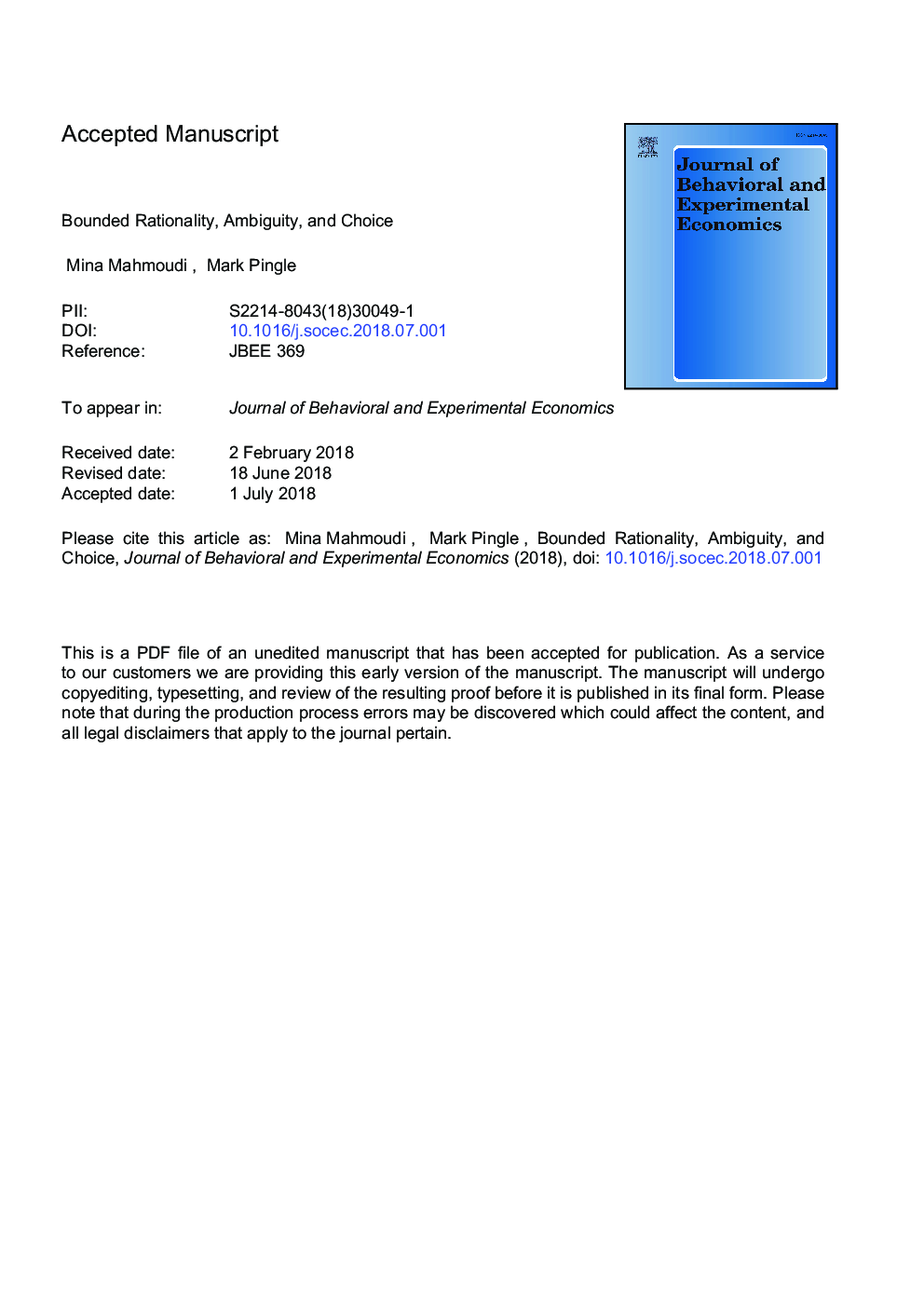| Article ID | Journal | Published Year | Pages | File Type |
|---|---|---|---|---|
| 7241939 | Journal of Behavioral and Experimental Economics | 2018 | 37 Pages |
Abstract
This paper examines the hypothesis that cognitive limitations lead people to behave as if they are facing ambiguity, even when no ambiguity is apparent. We compare human subject decision behavior under total ambiguity, where no probability information is available, to behavior a case with no apparent ambiguity, where probabilities are transparently presented. We find that decision behavior in the Total Ambiguity case is predictive of the deviations we observe in the No Ambiguity case from the choice predictions of subjective expected utility theory. We also create prospect pairs to examine whether more cognitively challenging probabilities create ambiguity which we can identify using ambiguity theory. Using these pairs, we do not find evidence that a cognitively challenging probability creates ambiguity that systematically alters decision behavior.
Related Topics
Social Sciences and Humanities
Economics, Econometrics and Finance
Economics and Econometrics
Authors
Mina Mahmoudi, Mark Pingle,
